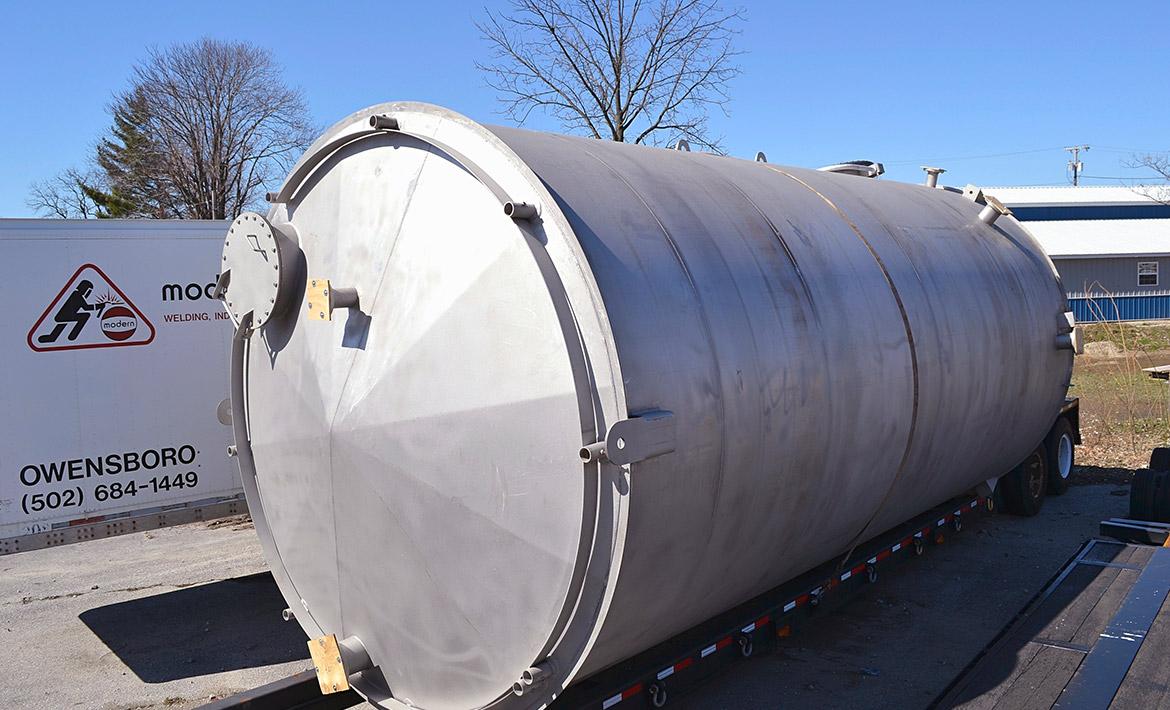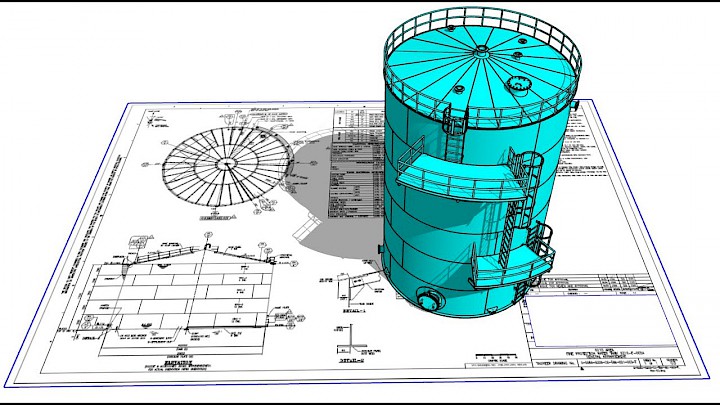The Critical Role of API 650 Welding Inspection in Performance Standards
A Detailed Take A Look At the Setup Refine of Welding Inspection Techniques
Welding inspection is a critical procedure that assures structural stability and safety and security. The installment of evaluation methods includes a number of organized steps, each indispensable to attaining trusted outcomes. From preparation and device choice to carrying out non-destructive and visual tests, each phase needs cautious focus. Understanding these procedures can significantly enhance quality control in welding jobs. What obstacles occur in implementing these strategies, and how can they be successfully attended to?
Understanding the Value of Welding Examination
Welding assessment is a vital component of making sure architectural stability and safety and security in building and construction and production procedures. This technique includes reviewing bonded joints for flaws, ensuring that they meet particular requirements and guidelines. By systematically gauging weld quality, inspectors can identify issues such as cracks, spaces, and insufficient fusion, which can compromise the stamina and toughness of frameworks.
The value of welding evaluation expands past immediate safety issues; it helps prevent costly failings and prospective dangers in the long-term. Reliable examination strategies foster compliance with market criteria, thus enhancing the general integrity of bonded parts. In addition, a durable inspection procedure adds to maintaining the online reputation of manufacturers and home builders, as it ensures clients of the top quality of their jobs. Inevitably, understanding the significance of welding evaluation is vital for advertising secure building practices and making certain the durability of necessary facilities and items.
Choosing the Right Tools for Evaluation
When selecting the proper devices for assessment, it is necessary to ponder the particular needs of the welding process and the products entailed. Different evaluation approaches, such as aesthetic, ultrasonic, and radiographic screening, necessitate unique devices tailored to their distinct needs. For aesthetic assessments, tools like amplifying calipers and glasses are essential for evaluating weld top quality. Ultrasonic testing requires specialized devices efficient in sending and getting acoustic waves to find inner flaws. Radiographic screening, on the other hand, uses X-ray or gamma-ray resources together with delicate movie or digital detectors to reveal variances.
In addition, personal protective equipment (PPE) is important to ensure the safety of examiners throughout evaluations. Picking the right devices not just boosts the precision of inspections yet additionally adds to the overall stability and security of the welding project. A detailed understanding of offered devices and their applications is necessary for effective welding inspection.
Preparing for the Examination Refine
Prior to initiating the assessment process, it is vital to establish a detailed strategy that outlines the scope and goals of the evaluation. This strategy ought to include specific criteria that define what makes up acceptable top quality in the welding work being evaluated. Determining the appropriate codes and requirements is essential, as they will assist the examination criteria and methodologies.
Furthermore, workers associated with the inspection should be properly trained and accredited in welding examination strategies to ensure integrity and accuracy. A list can be valuable in arranging the different facets of the examination, varying from equipment preparedness to environmental conditions that can affect the evaluation.

Logistical factors to consider such as scheduling, readily available resources, and interaction in between group members ought to be dealt with. By preparing methodically, examiners can enhance the performance of the analysis and guarantee that all critical aspects are duly thought about prior to proceeding with the inspection itself.
Carrying Out Visual Assessments

Conducting visual examinations is a vital step in the welding examination procedure, needing mindful prep work to assure reliable examination. Inspectors must know with vital flaw indicators that can signify possible problems in weld quality. By concentrating on these elements, one can enhance the total dependability of the examination outcomes.
Preparing for Visual Assessment
Aesthetic assessment functions as a crucial initial step in the welding examination process, ensuring that any kind of potential issues are recognized early (API 650 Welding Inspection). Correct preparation is necessary for effective aesthetic examination. Inspectors need to start by examining appropriate documents, consisting of welding procedures and specifications, to understand the task needs. They have to collect essential tools, such as multiplying glasses, flashlights, and suitable individual protective devices (PPE) A complete assessment of the inspection location is crucial; inspectors ought to verify it is totally free and tidy of blockages. In addition, it is essential to develop suitable lights conditions to enhance visibility of welds. By taking these preparatory actions, examiners can create a setting helpful to identifying disparities and guaranteeing the honesty of the welded structures
Trick Problem Indicators
A complete understanding of essential flaw indications is important during aesthetic evaluations to assure the top quality and security of welded joints. Examiners should concentrate on specific indicators such as fractures, porosity, undercuts, and insufficient combination. Splits might look like sharp lines and can compromise structural stability. Porosity materializes as tiny openings that can damage weld stamina. Undercuts, which are grooves along the weld edge, can bring about stress and anxiety concentration. Insufficient combination indicates that the weld steel did not effectively bond with the base product, resulting in a weak joint. By methodically identifying these defects, assessors can determine conformity with sector requirements and boost the total dependability of bonded structures, inevitably contributing to safer operational problems.
Implementing Non-Destructive Checking Strategies

Various non-destructive testing (NDT) methods are essential to assuring the honesty of welded frameworks without compromising their performance. These approaches allow inspectors to evaluate weld quality and discover issues without creating damages to the products being evaluated. Common NDT methods consist of ultrasonic screening, radiographic screening, magnetic particle testing, and color penetrant screening. Each method serves a certain function, addressing different sorts of defects such as fractures, porosity, or insufficient combination.
Implementing NDT techniques requires a methodical approach, starting with choosing the proper approach based upon the products and the nature of the weld. Training employees in these methods is vital for exact outcomes. Additionally, establishing clear procedures and criteria guarantees consistency throughout the examination process. By incorporating NDT right into the try these out welding assessment workflow, organizations can enhance the integrity of their items while decreasing prospective threats connected with structural failures. This proactive approach eventually adds to keeping safety and quality requirements in welded constructions.
Recording and Examining Assessment Results
Reliable documentation and analysis of examination results are vital components of the welding inspection procedure. Accurate documents of evaluation findings work as a reference for high quality assurance and compliance with market requirements. API 650 Welding Inspection. Inspectors must make use of electronic systems or structured types to log information such as the sort of weld, evaluation techniques used, and any kind of disparities determined throughout the evaluation
As soon as data is collected, detailed analysis is vital. This involves comparing outcomes versus established criteria to identify trends or reoccuring issues. Statistical devices may be utilized to quantify defects and evaluate their influence on overall weld quality.
In addition, reliable communication of searchings for to pertinent stakeholders is imperative. Summaries and reports need to be clear and succinct, highlighting essential insights and referrals for corrective activities. By methodically evaluating and recording inspection outcomes, organizations can promote constant enhancement in welding practices and boost product integrity.
Frequently Asked Inquiries
What Qualifications Are Needed to Become a Welding Inspector?
To become a welding assessor, one typically needs pertinent certifications such as AWS CWI, along with experience in welding techniques, knowledge of welding codes, and proficiency in examination techniques to assure high quality and safety and security criteria.
How Often Should Welding Inspections Be Conducted?
Welding inspections should be performed on a try this website regular basis, typically after each weld is finished, and occasionally throughout tasks. Aspects such as project complexity, market criteria, and regulatory needs can influence the frequency of these inspections.
What Is the Cost of Welding Examination Services?
The expense of welding examination services differs significantly based on factors such as project location, dimension, and intricacy. Usually, prices range from $100 to $150 per hour, with extra charges for specialized testing and accreditations.
Exist Certifications for Welding Inspectors?
Yes, there are various qualifications for welding examiners, consisting of those their explanation supplied by the American Welding Society (AWS) and the International Institute of Welding (IIW) These qualifications ensure examiners possess the necessary skills and understanding for reliable analyses.

Just how Do I Choose an Evaluation Company?
To choose an examination service copyright, one must evaluate qualifications, experience, sector track record, and consumer evaluations. In addition, comparing service offerings and rates can aid assure the selected company fulfills certain job needs successfully.
Furthermore, employees entailed in the inspection must be adequately educated and accredited in welding evaluation techniques to assure reliability and precision. Conducting visual inspections is a necessary action in the welding assessment process, calling for cautious preparation to assure efficient assessment. Aesthetic inspection serves as an important first action in the welding assessment process, ensuring that any type of potential flaws are determined early. Effective documentation and evaluation of inspection results are crucial parts of the welding inspection procedure. Welding assessments need to be performed consistently, typically after each weld is finished, and regularly throughout tasks.